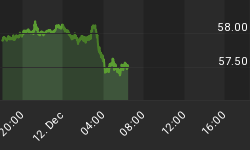I have just read ![]() John Mauldin's warning that the market is overvalued:
John Mauldin's warning that the market is overvalued:
Not only does today's CAPE of 25.4x suggest a seriously overvalued market, but the rapid multiple expansion of the last few years coupled with sluggish earnings growth suggests that this market is also seriously overbought, as I pointed out last week and as we are seeing play out this week.
Robert Shiller's CAPE ratio compares the current index price to a 10-year simple moving average of inflation-adjusted earnings in order to smooth out earnings and provide a long-term indication as to whether the market is under- or over-valued. But ratios are far from infallible. One of the first things fundamental investors/traders learn is: do not buy a stock simply because the Price-to-Earnings (PE) ratio is low, and never short a stock simply because the PE ratio is high. The reason is fairly obvious. In the first case, current earnings may be expected to fall and, with high PE ratios, earnings are likely to grow.
Let's examine CAPE more closely. First, we have experienced the worst recession in almost a century; so does a moving average of the last 10 years adequately reflect sustainable long-term earnings? In the chart below I removed the highest and lowest quarter's earnings in the last 10 years [dark green]. Note the visible difference losses reported in Q/E December 2008 make to the long-term average.

*Reporting for the December quarter is not yet completed and unreported earnings are based on S&P estimates.
The chart also highlights the fact that Shiller's CAPE is relatively low compared to the last 15 years, where the average is close to 30. The normal PE of 18.4, calculated on the last 12-month's earnings*, is also low compared to an average of 28 for the last 15 years.
As novice investors learn, it is dangerous to base buy or sell signals on a PE ratio, whether it is CAPE or regular PE based on 12-months earnings. Using CAPE, we would have sold stocks in 1996 and again in 2003, missing two of the biggest bull markets in history. And we would have most likely bought in 2008, when CAPE made a new 10-year low, right before the collapse of Lehmann Brothers.
I submit that CAPE or PE ratios are not an end in themselves, but merely a useful tool for highlighting expectations of future earnings. At present both ratios are rising, suggesting that earnings prospects are improving.

















